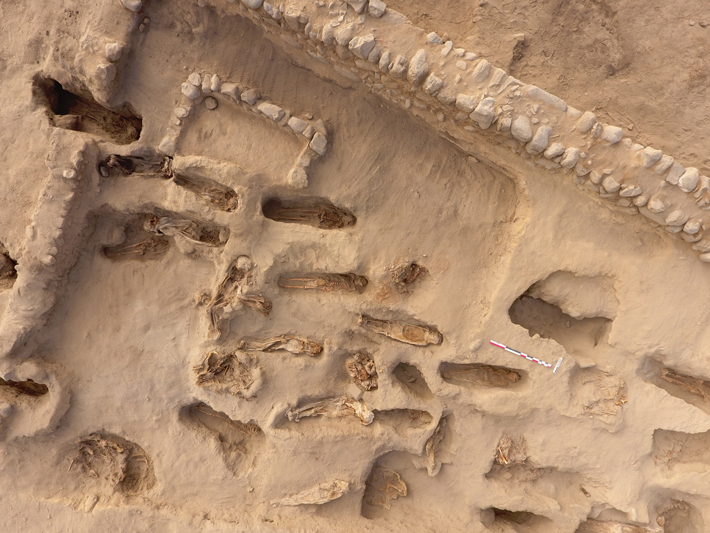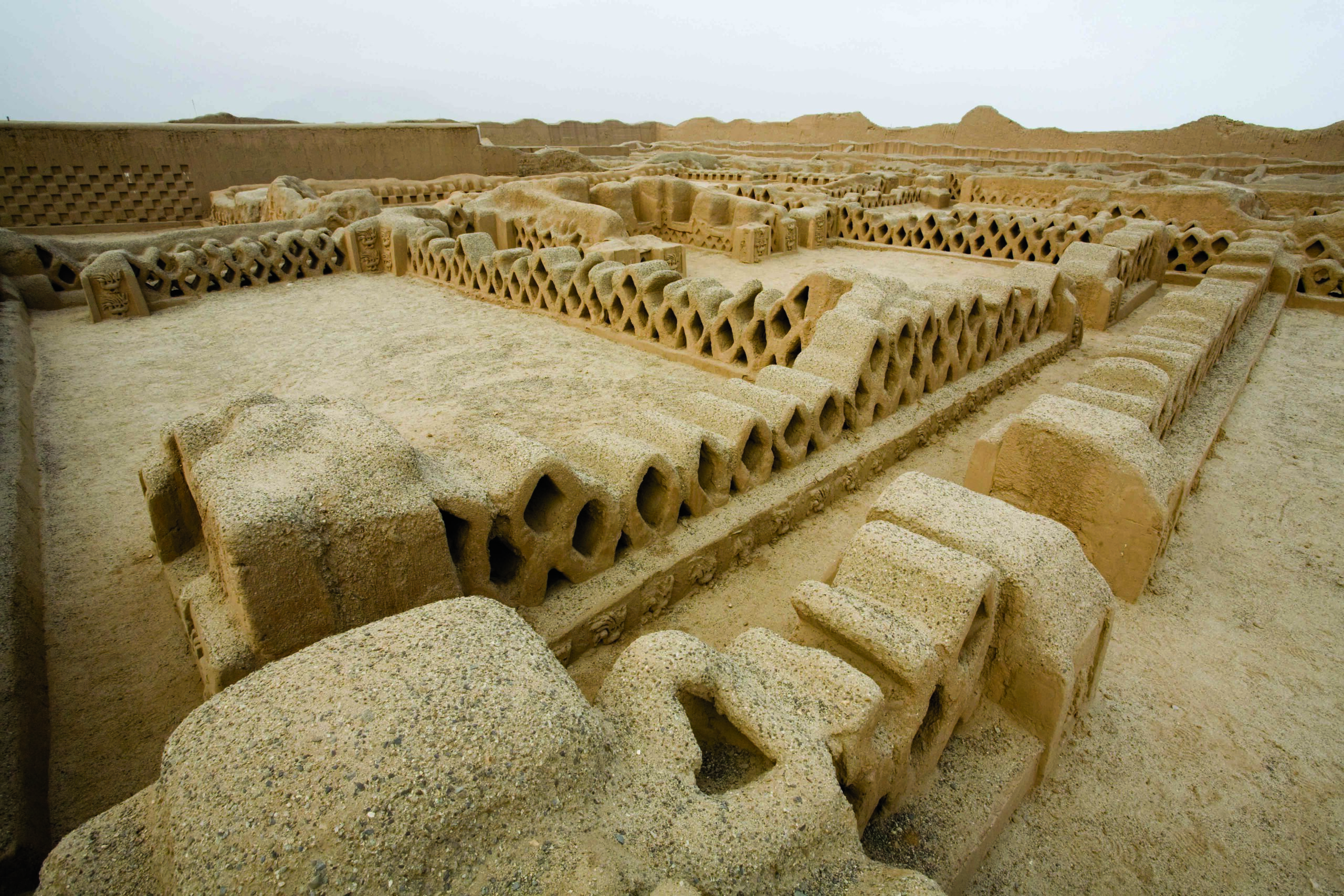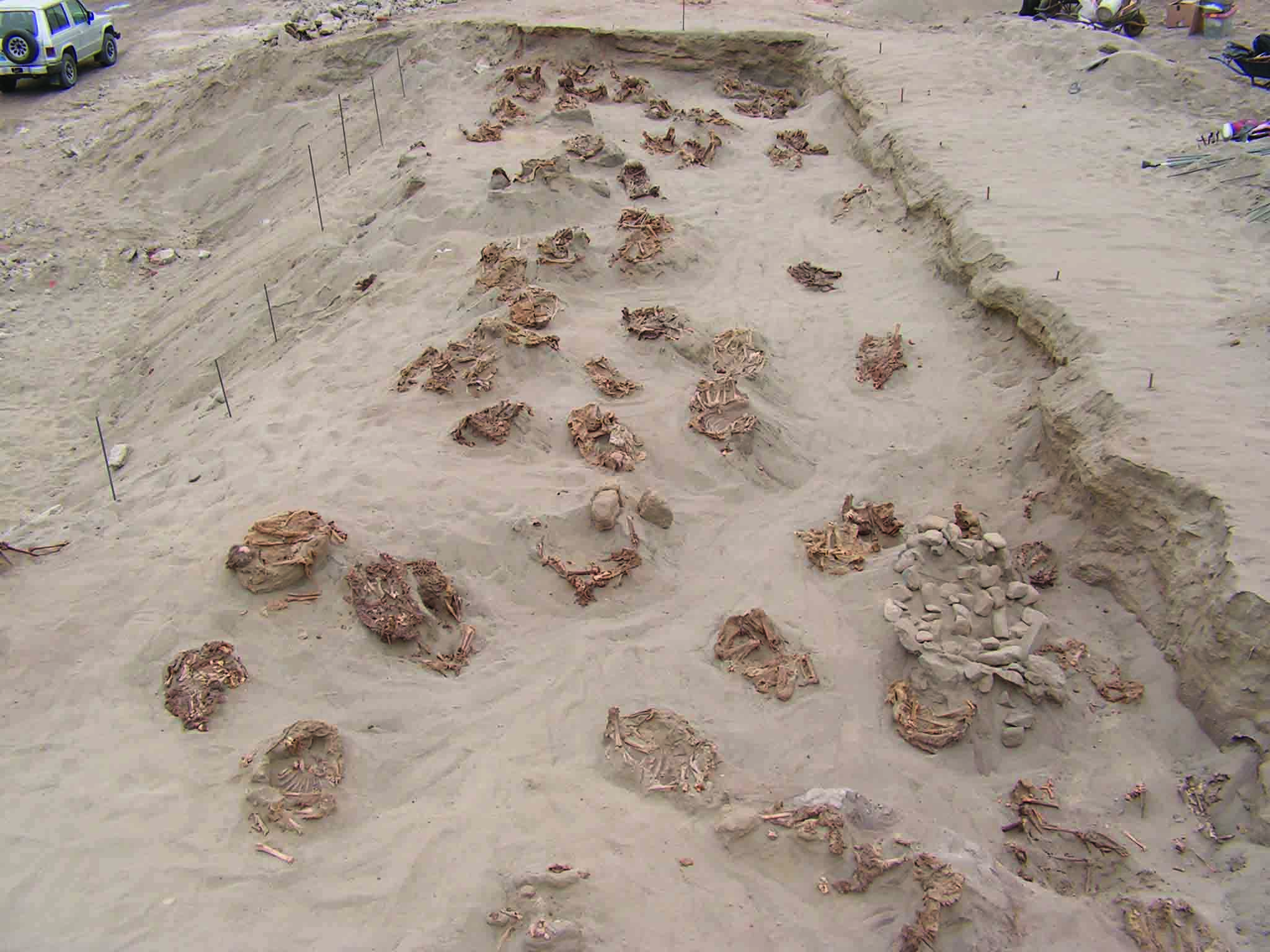
HUANCHACO, PERU—The Guardian reports that 227 skeletons of children ranging in age from five to 14 have been uncovered at a coastal desert site in northern Peru. “This is the biggest site where the remains of sacrificed children have been found,” said National University of Trujillo archaeologist Feren Castillo, part of an excavation team led by Gabriel Prieto of the University of Florida. The children are thought to have been sacrificed by the Chimú culture some 500 years ago, during a period when the El Niño weather pattern caused torrential rains and flooding. Muddy footprints suggest the children marched one mile from the adobe city of Chan Chan to the burial site, and lesions on their breastbones indicate they were killed with ceremonial knives before they were buried facing the sea. Some of the well-preserved remains still have skin and hair, and some of the children were wearing silver earrings at the time of death. To read about funerary idols found in an elite Chimú tomb, go to "Artifact."









